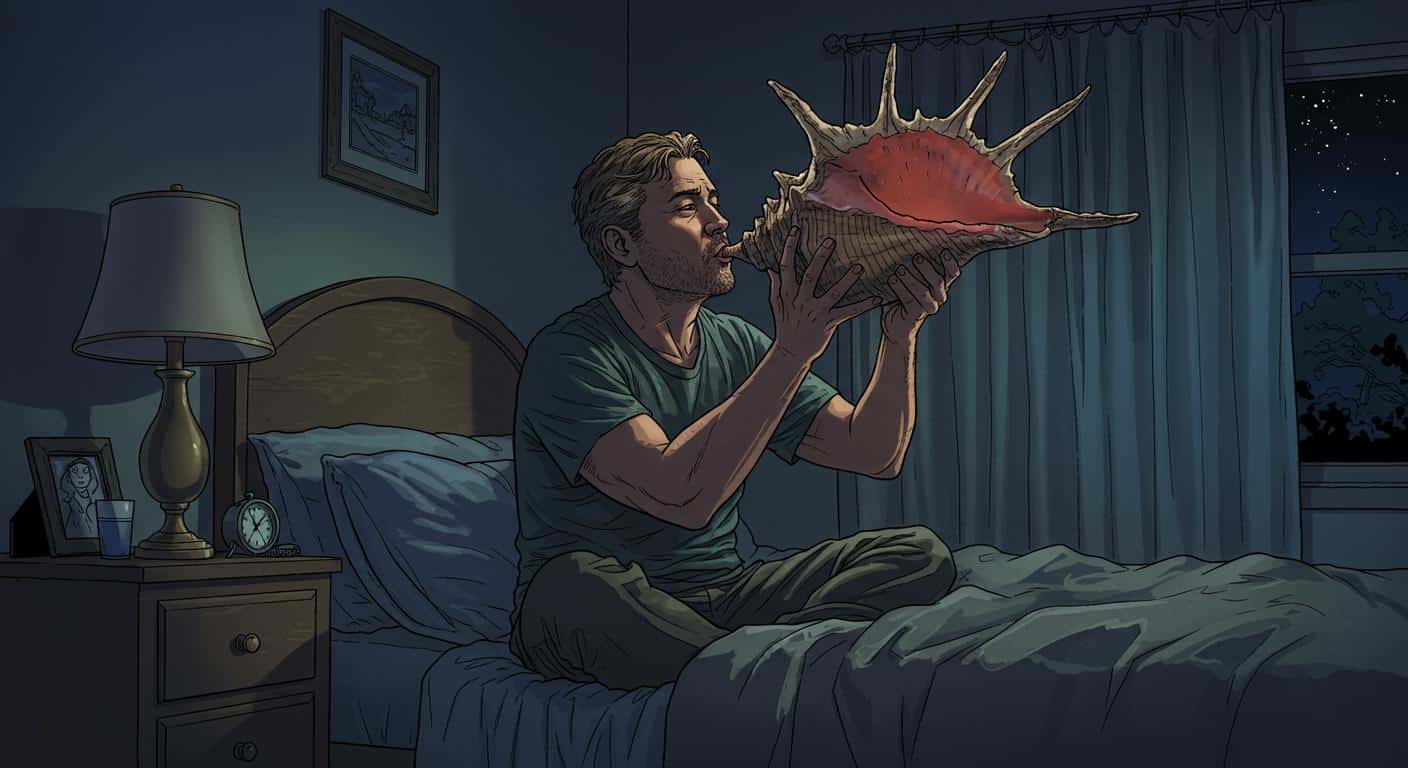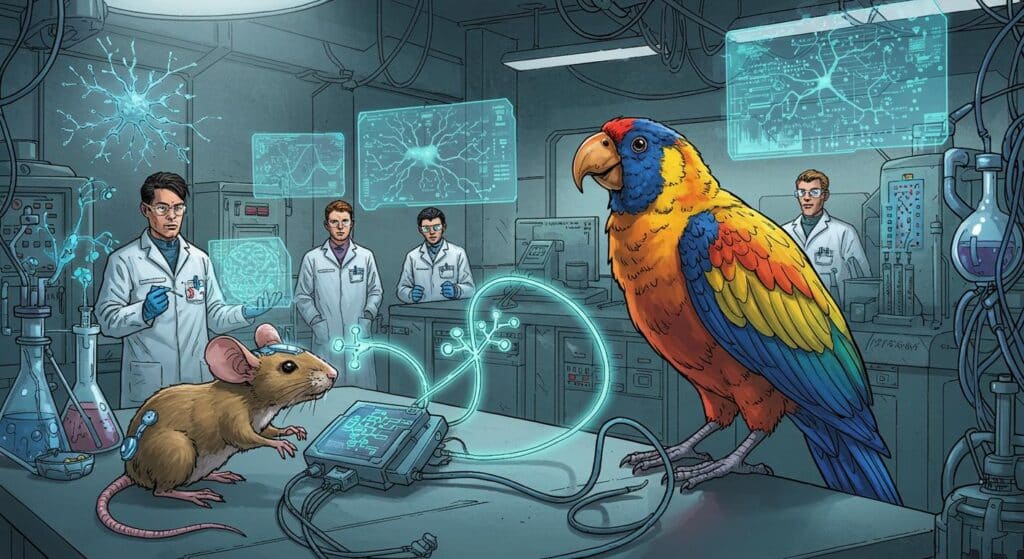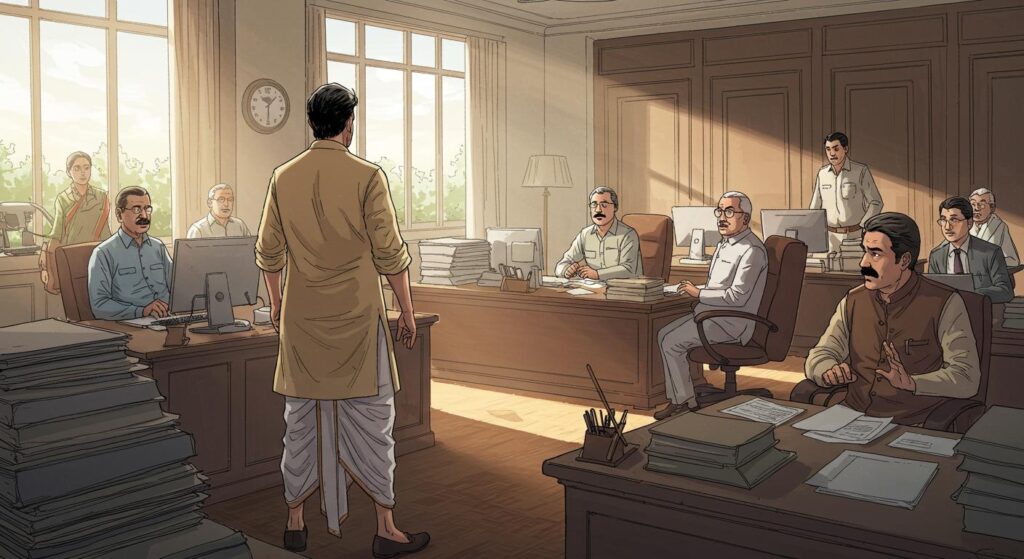There are certain objects we all stash beside our beds—glasses, books, the odd glass of water, or maybe a sentimental trinket picked up on a long-forgotten beach walk. But, unless you’re a die-hard collector of coastal oddities, you probably haven’t considered a conch shell as a sleep aid. Yet, according to recent research, blowing into a conch shell—an ancient practice in India—could provide genuine relief for people with sleep apnea, as described in a trio of newly published studies.
Sleep Apnea Gets a Blow—Literally
It’s not every day that the line between folk ritual and medical intervention goes from folklore to polysomnography and back again, but that’s precisely what happened when researchers at Jaipur’s Eternal Heart Care Centre took a closer look at shankh blowing, the traditional Indian art of conch shell playing. In a randomized controlled trial reported by Sci.News, 30 adults with moderate obstructive sleep apnea were either taught conch shell blowing or guided in standard deep breathing exercises. After six months, participants in the shankh group saw an average of four to five fewer blocked-breathing events per hour at night, and reported a 34% reduction in daytime sleepiness. Their oxygen levels while sleeping also improved—never the flashiest metric, but the kind your cardiologist would actually care about.
The outlet details how this technique isn’t just about pushing air: the practice involves a deep inhale, then a forceful, sustained exhalation through tightly pursed lips, creating vibration and a fair amount of resistance. Researchers, led by Dr. Krishna Sharma, suggest this likely strengthens the upper airway muscles—the very ones that often let gravity get the better of them in sleep apnea sufferers.
NewsNation echoes these findings, noting that aside from more restful sleep, the conch group had higher nighttime blood oxygen levels and reported feeling markedly less drowsy during the day. Dr. Sharma is quoted explaining that these physical demands may make the surrounding structures, like the throat and soft palate, more resilient to collapse. The report also points out that while CPAP (continuous positive airway pressure) machines remain the standard, many people struggle with their bulk or discomfort, and affordable, non-electronic therapies are worth exploring.
The Odd Intersection of Tradition and Therapy
What’s hard not to appreciate is how old traditions sometimes come full circle in the most scientific way. Blowing a conch shell, known as shankh blowing, is a ritual documented in Indian culture for thousands of years. The technique, as Sci.News notes, calls on the body to engage in a kind of resistance training for the soft tissue guarding the upper airway. According to Dr. Sharma, the conch’s spiraling structure may amplify acoustic and mechanical effects—an eyebrow-raising idea that bridges physics, culture, and medicine.
The Times of India explores how this approach compares to more mainstream breathing exercises, pointing out that singing, playing other wind instruments, or engaging in “myofunctional therapy” are all established ways to give tired airway muscles a fighting chance overnight. Yet, the conch brings its own flair, and perhaps a touch of fun (and for the determined, a sure-fire way to impress or alarm the neighbors).
Earlier in their report, the Times of India underscores the stakes: sleep apnea isn’t just a snoring issue. By causing intermittent breathing lapses, the disorder hikes up the risks for high blood pressure, stroke, heart disease, and delightfully hazardous daytime drowsiness. While existing therapies like CPAP work for many, they’re not universally embraced—or accessible.
When Seashells Meet Science (and Your Nightstand)
It has to be said: in the world of medical oddities, “therapeutic conch shell” is a rare breed. But as outlined in these reports, the science is promising if humble in scale. The initial trial was small and participants received in-person coaching—so, much like learning to play the recorder in third grade, results could vary if you go solo. All of the coverage agrees there’s more work to be done before the conch shell replaces your CPAP or becomes the trending stocking stuffer for sleep clinics.
Yet even experts cited by the Times of India concede there’s little harm in giving it a try—assuming no objection from room- or housemates, and a healthy respect for volume control. At the very least, it’s a rare overlap: a folk tradition with plausible physiological benefits, now backed by the beginnings of rigorous evidence.
Lessons from the Seashell Drawer
There’s something oddly satisfying about seeing a familiar, often-overlooked object take on a new (or very old) value. For a practice that’s echoed through rituals and ceremonies for generations, shankh blowing’s path into scientific journals is a gentle reminder of how much we still have to learn from the margins of tradition. Is it destined to become standard therapy? Too soon to say—though stranger treatments have found their place in medicine.
In a world obsessed with the newest sleep gadget or next miracle cure, maybe the most compelling question is this: could the secret to a better night’s rest really be sitting on your nightstand, disguised as yesterday’s beach souvenir? Sometimes, the answer is a lot closer—and louder—than we’d expect.







